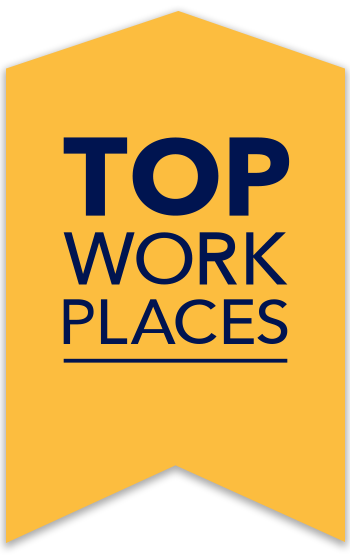Burnout at work is a real problem and has intensified during the long stretch of the pandemic. In survey responses gathered by Energage from thousands of employees over recent months, 39 percent said they often felt overwhelmed at work. Even more worrisome, only 64 percent said they felt their company cared about burnout.
Employee burnout impacts all companies, even Top Workplaces
And we’re not talking about run-of-the-mill workplaces. Many of these employees work for Top Workplaces. “There’s a lot of room for improvement,” said Greg Barnett, chief people scientist at Energage.
While burnout is not a new concept, the pandemic has turned up the stress on workers. Burnout in managers is a looming threat, too — and that can cause ripple effects throughout the organization.
For many, remote work blurred the boundaries between work time and personal time. Think of people working remotely while also facing childcare issues or eldercare issues. Many organizations have done a good job managing a remote workforce; some are considered the best work-from-home companies.
And of course, think of health care workers, who have faced incredible pressure regarding the challenging circumstances of their work, plus the training and the hours.
Learn more: How to Prevent Burnout in Remote Employees
Employees experience different types of work stress
Work is rarely easy. But there is a difference between high expectations and unreasonable expectations — workloads with no end in sight. Let’s break down the different kinds of stresses that come with work:
- Positive stress: Think of this as “excitement stress” regarding things like a big project. Putting skills to the test. Working with a team. Meeting a goal for the organization. It can be stressful but exciting in a positive way.
- Short-term stress: Acute stress or short-term stress happens all the time. It’s triggered when someone says, “Hey, I need this tomorrow.” Or maybe it’s triggered by dealing with a challenging customer. Situations can create short‑term emotional stress.
- Chronic stress: This is more closely aligned with burnout. It’s created when people work without sufficient resources or under unrealistic expectations.
Long-term chronic stress takes a toll on people’s mental and physical well-being. Burnout leads to more time off work, retention gaps, longer response times for customers, and production delays.
How Top Workplaces prevent employee burnout
In the early months of the pandemic, workers rolled up their sleeves to do whatever it took to get through. But in some cases, the challenges did not subside, nor did the expectations.
“You can’t set expectations well above where they were before and never return to baseline,” said Kinsey Smith, senior data analyst at Energage. “You can’t expect employees will be able to continue to deliver at that same level forever, without a break, without a reprieve. You can’t be in a wartime situation forever. You have to get back to peace eventually.”
Here’s what forward‑thinking employers are doing to prevent burnout:
- Ask the question: Simply asking employees how they’re doing is the first step toward acknowledging the issue.
- Distribute workloads: Make sure work is shared and expectations are reasonable.
- Offer flexible schedules: When possible, use flexible schedules and flexible hours. Remote work can help. Consider best practices for successful flexible work arrangements.
- Celebrate the wins: Instead of jumping from project to project or crisis to crisis, be sure to celebrate achievements and goals reached.
- Get creative: Adopt things like no-meeting days to give workers a chance to think, create and catch up.
- Give support: More companies are offering mental health resources or coaching.
- Respect boundaries: Allow people time to balance their work and their lives.
Solutions don’t require managers to solve their employees’ personal problems or back away from challenges.
“Stretch assignments and stretch opportunities are definitely good for employee growth,” Smith said. “That’s not normally the thing we’re talking about when it comes to burnout. Burnout is normally your workload is consistently too high to be able to finish it during work hours. You can’t set aside that stress at the end of the workday.”
Companies are interested in helping employees recharge and creating a foundation for long-term success, Smith said. “It will feed their bottom line because if employees burn out, people will quit, and the more people quit, the harder it is to replace them,” she said.
If your company believes in the power of a people-first culture, get recognized for it! Nominate your organization for Top Workplaces, the employer recognition program that offers awards in 60+ regional markets as well as national awards for culture and industry excellence.

